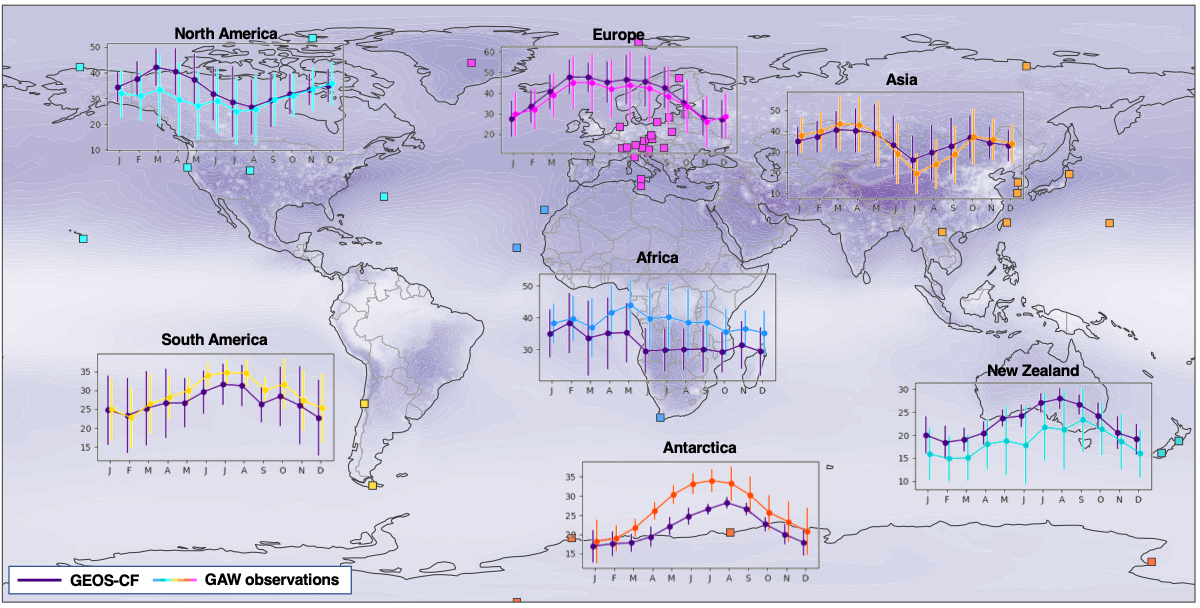GEOS-CF Surface Ozone Compares Well Against Background Observations from the Global Atmospheric Watch (GAW) Network
Surface ozone is harmful to humans and the environment, and the main ingredient of smog. Ground level ozone is not directly emitted but formed in the presence of sunlight through chemical reactions of nitrogen oxides (NOx) and volatile organic compounds. Computer simulations are critical to understand these complex interactions and help predict—and ultimately mitigate—the formation of surface ozone. The NASA GEOS composition forecast system (GEOS-CF) produces daily global analyses and forecasts of surface ozone.
Comparisons against observations from the Global Atmospheric Watch (GAW) network highlight that GEOS-CF captures much of the observed spatial and temporal variability of surface ozone. This includes the springtime peak due to stratospheric influence observed in the high northern latitudes, high summertime ozone driven by anthropogenic pollutant emissions and high photochemical activity (as apparent over Europe), as well as low surface ozone in areas with very high concentrations of NOx, such as Eastern China. The model-observation comparisons also reveal some current model limitations, such as an underprediction of summertime ozone over the Southern Ocean due to excessive ozone deposition over ocean water. This is a known issue in GEOS-Chem v12.1—which powers the current version of GEOS-CF—that has been addressed in later versions.
References:
Keller, C. A., Knowland, K. E., Duncan, B. N., Liu, J., Anderson, D. C., Das, S., et al., 2021: Description of the NASA GEOS composition forecast modeling system GEOS‐CF v1.0, J. Adv. Model. Earth Syst.,13, e2020MS002413. DOI: 10.1029/2020MS002413.
Pound, R. J., T. Sherwen, D. Helmig, L. J. Carpenter, and M. J. Evans, 2020: Influences of oceanic ozone deposition on tropospheric photochemistry. Atmos. Chem. Phys., 20, 4227–4239. DOI: 10.5194/acp-20-4227-2020



